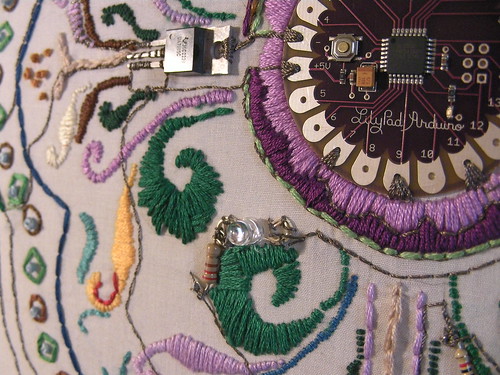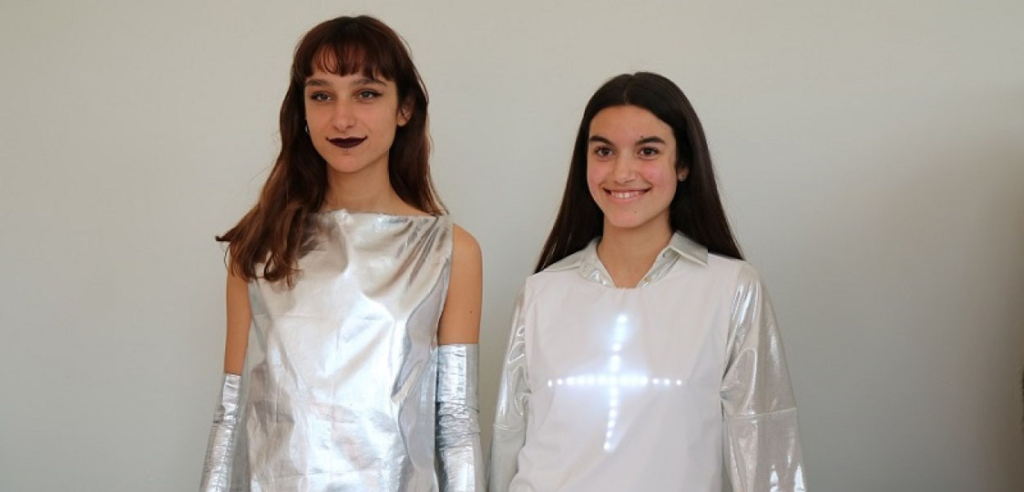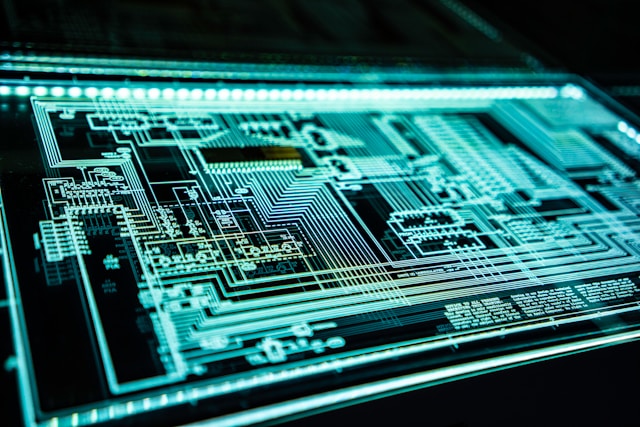Technology and Fashion side by side
The frontier between Fashion and Technology is blurring. Fashion tech is the place where technology and fashion have merged for designers to be able to innovate and solve problems to improve people´s lives.
Technology is a new way to enhance creativity, beauty, desire, identity, diversity, and self-expression.

We are living in the future or, if you prefer, in a sci-fi movie. Many of the prodigies of science-fiction literature are materializing today… aren’t video calls through our wristwatch fascinating? And what about the garments that control pulse, breathing, blood flow, or muscle fatigue?
Technology opens a new era and creates a new space for consumers to experience fashion. It is changing the traditional relationship between users and clothes, between users and environment, and amongst users themselves. Technology has created a brand new path for fashion.
1. Leah Buechley Lilipad Arduino
It’s fascinating to see how a visionary can change the course of intelligent fashion. Leah Buechley is a designer, engineer, and educator. Her work explores the integration of electronics, computing, art, craft, and design. She invented the Lilypad Arduino, a construction kit for sew-able electronics that drove the development of smart fabrics.

The first models of her kit were born in 2006, initially conceived as personal prototypes for use in her classes to show how to build electronic textiles.
Fabrics have now the ability to detect information about the environment through the use of sensors and can respond to changes in the environment. This means that garments have become interactive: they have begun to think for themselves, thanks to the incorporation of electronic material.
Among the pioneers in this trend is the High-Low Tech group, founded and directed by Leah while she was an associate professor at the MIT Media Lab.
The sparks that ignited this revolution were the Do it yourself movement, the Maker philosophy, and the creative freedom that open Arduino hardware put at the service of designers and artists.
Also, Google has created a system for weaving technology that can turn clothes or any other textiles into gesture-controlled surfaces, Project Jacquard.
If designers and developers implemented this tech in sensor-laden garments, these could be used in everyday life, transforming our clothes into a new skin layer for interaction.
The fact that all users have control of technology makes computing an empowering tool at the service of people.
2. Digital Fabrication
And now it’s the turn of digital modeling and fabrication.
In this manufacturing process, the machine is controlled by a computer. It combines 3D modeling or computing-aided design (CAD) with additive and subtractive manufacturing. The most common forms of digital fabrication are:
- CNC Machining: where, typically, shapes are cut out in milling materials such as plywood, plastics, foam board, and metal, at high speed.
- 3D Printing: Additive manufacturing where objects are built up out of layers of metal, plastic, etc.
- Laser Cutting: is a machine that uses laser technology to cut materials such as chipboard, matte board, felt, wood, acrylic, or metal.
The important aspect that unifies them is that the machines can be reliably programmed to make consistent products from digital designs.

Danit Peleg has developed the first 3D printed garment ever sold online: a bomber jacket designed and printed exclusively for their customers in a one-hundred-piece limited edition.
Sportswear giant Adidas Futurecraft, has already marketed its first models of 3D printed shoes, with great success among consumers.
3. Sustainable futures
Digital fabrication turns designers and artists into new digital artisans, a kind of tech crafters. It allows us to make rapid prototyping, short series, and manufacture to order. Furthermore, this gives designers the freedom to create innovative and fully-customized products.
The perfect solution to wasteful consumption and stock accumulation. What is clear is that the future of fashion will be sustainable or will not be.

We live in the century of co-creation. Surely, in a much closer future, than we think, we will be able to cut a dress in a Fab Lab or 3D print our sneakers or accessories at home, simply by downloading a digital file. At this point, the debate on intellectual property and the chain of suppliers are served.
Our challenge for the future could be a “more embedded” one, in which the clothes or accessories we wear have a better way of sensing on a daily basis.
But, what if our future clothes were virtual? No manufacturing, no water wastage, no shipping, no carbon footprint? $9.500 for the first-ever digital couture to be auctioned on the blockchain.
The Fabricant, a Digital Fashion House, has actually sold one of an item that has never been physical. Strike a pose and save the planet, two for the price of one.
Enjoyed this piece of content? Subscribe to Fashinnovation’s newsletter and keep up-to-date with the latest innovations in fashion!
* By Constanza Mas, founder of constanza+
Want to know more about Constanza’s work? Watch her participation at one of our panels at the 2nd edition of Fashinnovation Talks.






